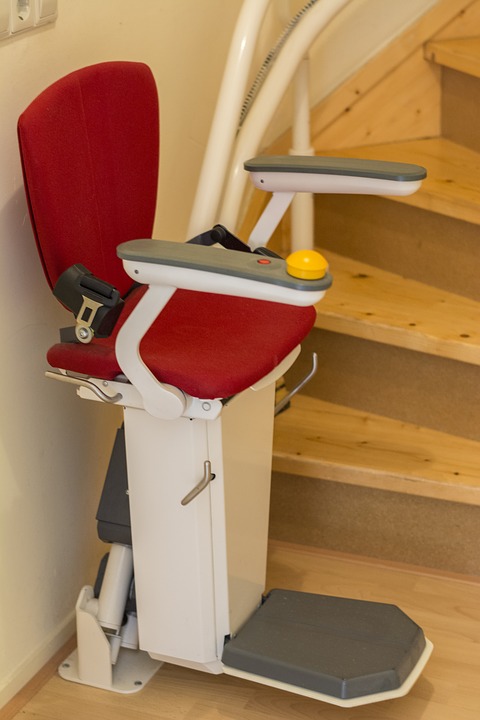
Most Americans prefer to live in their own homes even after retirement. The problem is, when one gets up there with age, moving around the house becomes a tad too difficult. For an aging person with brittle bones, climbing up those steep stairs, for instance, can be very dangerous. It can even lead to serious accidents.
The good news is there are already devices that enable seniors to have that mobility. The devices are useful in specific circumstances, many of them requiring only a bit of retrofitting in the home. Here are some of those home mobility solutions for aging in place.
Stairlift
A stairlift is a battery-operated chair that can take people who have difficulty climbing stairs to upper levels. The chair typically runs along the walls of the home through a rail. The device can be installed:
- Indoors: For access to upper levels in the confines of the home
- Outdoors: For access to upper levels outside such as in porches, for example. Outdoor stairlifts have to be made of more durable materials as they will have to withstand external factors such as the rain, the heat, among others.
Stairlifts also come in different types, depending on the staircase in which they will be installed:
- Curved stairlift: If the staircase is curved and has complicated architectural features
- Straight stairlift: If the staircase is straight and simple.
Stairlift prices vary, depending on the type chosen and the features which will be added to the contraption.
Wheelchair Lift
For aging people who require a wheelchair to move around, a different contraption is required to access upper levels inside and outside the house. Although a stairlift can take people to the top, using it would require physically transferring the aging person from the wheelchair to the device. That requires a lot of effort on the part of the person making the transfer, and on the part of the one being transferred. A wheelchair lift is the more appropriate mobility device in these kinds of situations. Wheelchair lifts can be either one of two types:
- Vertical: This type is essentially composed of a flat platform that moves up and down easily. It is usually detached from the staircase and is constructed where there is available space. The vertical wheelchair lift is typically used when staircases are too narrow for any contraption to be installed there.
- Inclined: This is a platform attached to the staircase. Unlike the vertical wheelchair lift that goes up and down, an inclined wheelchair lift travels along the staircase to reach the upper levels. For this to be installed, though, there should be ample space along the staircase and at the top of the stairs--both the aging person with his wheelchair and a person walking up the stairs should fit.
As with stairlifts, inclined wheelchair lifts can also be either curved or straight, depending on the type of staircase where they will be installed.
Several factors influence the prices of wheelchair lifts. Here are some of them:
- Distance to be traveled: The longer the distance a wheelchair lift will travel, the more expensive it is.
- Type of wheelchair lift: Inclined wheelchair lifts that are straight are cheaper than inclined wheelchair lifts that are curved.
- Features: The more features the wheelchair lift has, the more expensive it is. Features typically include a telephone, landing gates, among others.
Ceiling/Portable Lift
Aging people who can no longer sit up on the bed and walk to the nearest room can be transported with a ceiling or a portable lift. Both contraptions work in much the same way, but have slight differences:
- Ceiling lift: This is essentially a sling that can travel along a rail on the ceiling. If a senior wants to go to the bathroom, for example, they can sit on the sling and just wait for them to be taken there.
- Portable lift: In portable lifts, the ceiling rail is replaced by a stand with wheels. Unlike ceiling lifts that are mechanical, portable lifts typically require someone else to push them for the senior to be moved from one place to the other.
Between ceiling lifts and portable lifts, ceiling lifts are more expensive, primarily because they require a retrofitting of the home. The rail along which the sling will travel, after all, needs to be installed on the ceiling and entails construction costs.
Conclusion
Nowadays, it is no longer impossible for seniors to move from one place to the other inside and outside the house. Thanks to mobility devices, they can move with independence from one point to the other. Even their safety is no longer an issue, as gadgets for elderly health are already available in the market.
In short, for families, these technologies are really a godsend.